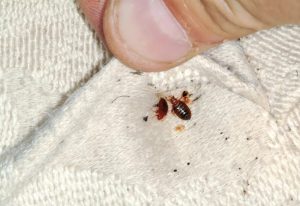
A woman’s morning turned alarming when she noticed small white grains scattered across her bed sheets. Initially, she assumed her husband had accidentally spilled rice while eating in bed. But on closer inspection, she realized something far more troubling.
The tiny, shiny, oval specks weren’t food at all — one even appeared to move. A quick online search confirmed her worst fears: they were bedbug eggs.
Bedbug eggs are minuscule, about 1 mm in size, white, oval, and shiny, often mistaken for grains of rice. They are typically hidden in mattress seams, behind baseboards, or within cracks in furniture. Within 6–10 days, the eggs hatch into larvae that feed on blood. While bedbugs rarely transmit diseases, their bites can cause itching, allergic reactions, skin irritation, and insomnia.

Bedbugs spread easily: they can be brought home in luggage after traveling, hidden in used furniture or clothing, or migrate from neighboring apartments through vents or wall cracks. Early detection and thorough cleaning are crucial to prevent infestations from escalating.




